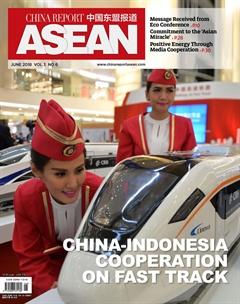Sino—Cambodian Economic Cooperation Forges Ahead
By Wang Qin
This year marks the 60th anniversary of the establishment of diplomatic relations between China and Cambodia. It is also the 6th year since both sides joined hands to seek common development under the “Belt and Road Initiative”.
In recent years, economic and trade relations between China and Cambodia have maintained the momentum of rapid development. According to data from Chinas Ministry of Commerce, China has remained Cambodias largest trading partner and the largest source of imports for the past few years. From January to November 2017, bilateral value of trade reached US$5.27 billion, up 23.3 percent over the same period in 2016.
From my perspective, both China and Cambodia should work on the following three points to promote economic and trade development for the two countries and forge ahead into the future.
Firstly, China and Cambodia should consolidate existing achievements and actively promote further docking of Cambodias “Rectangular Strategy” with Chinas “Belt and Road Initiative”.
In 2004, the Royal Government of Cambodia proposed the “Rectangular Strategy,” which focuses on optimizing administrative management at the core and at the same time aims to accelerate agricultural development, enhance infrastructure construction, attract more investment and develop human resources.
The focus on infrastructure construction of the “Rectangular Strategy” is consistent with the “Belt and Road Initiative.” More importantly, the docking of the development concepts of the two countries has already facilitated impressive progress on many important cooperative projects such as Siem Reap-Angkor International Airport and an expressway linking Phnom Penh to Sihanoukville.
The two countries can take the above-mentioned factors into consideration while formulating the Outline Plan for Jointly Promoting Cooperation on the Belt and Road Initiative and give full play to bilateral advantages in terms of political mutual trust, economic complementarity and people-to-people bonds .
Secondly, both sides should expand and deepen economic cooperation.
China and Cambodia are close geographically, and their economies are highly complementary. For example, consider the agriculture industry. Agricultural products from Cambodia such as cassava, pepper and dragon fruit are popular in China. However, due to a lack of complete industrial chain, logistics networks and factories in Cambodia, agricultural products grown in some areas cannot be exported.
In the future, China can use technology transfer to help Cambodia better develop modern agriculture, improve agrotechnology, promote the establishment and improvement of a complete industry chain involving agricultural production, agricultural products processing, warehouse logistics and international trade.
At the same time, under the framework of the China-ASEAN Science and Technology Partnership Program, the two countries should continue to promote construction of the China-Cambodia Joint Lab of Food Industry and the China-Cambodia Technology Transfer Center.
Thirdly, the two countries should encourage and support more qualified Chinese enterprises to invest in Cambodia.
With the rapid development of bilateral economic and trade cooperation, China has continuously increased its investment in Cambodia. Currently, Chinese investment in Cambodia are mainly concentrated in the fields of agriculture, energy, power grid, garment manufacturing, mining, industrial parks, catering services and tourism.
To promote linkage of Cambodias “Rectangular Strategy” and Chinas “Belt and Road Initiative,” China needs to further strengthen coordination and communication with related government authorities in Cambodia to create a more regulated and healthier environment for Chinese companies to conduct business in Cambodia. Related government departments in China need to provide more thorough investment information for Chinese companies and guide them in conducting market research to prevent overseas investment risks, actively fulfill social responsibilities and accelerate integration into local community in Cambodia.

